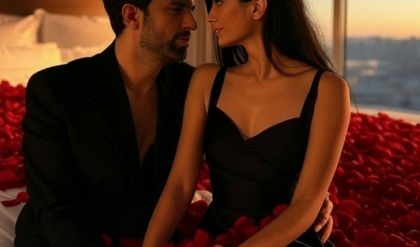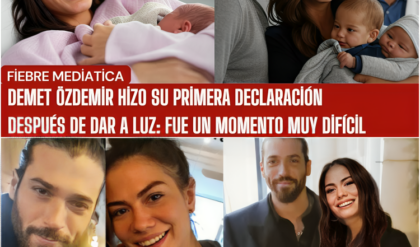Princess Elizabeth’s youth was largely shaped by her uncle’s abdication and the outbreak of the Second World War.

When Elizabeth was born she was third in line to the throne.
At the time it was highly unlikely she would become Queen as her uncle Edward – then heir presumptive – was young and expected to have children that would precede her in the line of succession.
She and sister Margaret enjoyed a happy childhood and were close to their parents.
Home-educated by tutors, they spent their free time playing in the sprawling grounds of the royal estates.
But when Edward VIII abdicated to marry an American divorcee, Elizabeth became heir to the throne – and she was forced to start preparing for her future life as Queen.
‘We four’

Princess Elizabeth on her christening day in May 1926
Princess Elizabeth was born at her grandfather’s house in Mayfair on 21 April 1926.
Known affectionately as Lilibet, she was the first child of Prince Albert, Duke of York – later King George VI – and the Duchess of York, nee Lady Elizabeth Bowes-Lyon.
Her sister Margaret was born four years later in 1930.
Then unconcerned by the line of succession, they were a tight-knit family who enjoyed a lot of quality time together – between London and the royal residences at Balmoral and Sandringham.
“That was quite unusual in royal or even aristocratic circles at the time,” Sarah Gristwood, royal author and historian, told Sky News. “It forged the Queen and gave her a lot of her strength to a certain degree.”
Although Elizabeth was close to her sister, their characters were very different, Gristwood added.
Strong sense of duty

Princess Elizabeth waves from a carriage in 1928
“Even in her early childhood, you could see some of the traits in Elizabeth that would mark her future life as Queen,” she said.
“She had a strong sense of duty – she was the good one and Margaret was the cute, naughty one.”
Princess Elizabeth’s “desire for order and to do the right thing” meant she would always make sure her shoes were in a precise order before she went to bed, Gristwood said.
The princesses were also close to their grandparents on both sides, with Queen Mary and George V particularly fond of them.
Neither of them went to school and were educated by tutors at home instead.

Princess Elizabeth visits The Royal Tournament at Olympia in 1931
“Her father wasn’t meant to be King and Elizabeth wasn’t meant to be the heir,” Gristwood said.
“The downside of that was the girls were given the education of nice young ladies – ie not much of an education at all.”
When Elizabeth was six and Margaret just two, the family brought in a young Scottish woman called Marion Crawford to be their governess.
“Crawfie” as she was affectionately known, was keen to show the girls what life was like outside “the glass curtain” and took them out with her around Balmoral to mix with locals.
“Only in her twenties herself, some doubted she would be experienced enough for the role, but her youth and energy was part of the reason their father chose her,” Carolyn Harris, royal historian and author of Raising Royalty: 1000 Years of Royal Parenting, told Sky News.
“Having been brought up with elderly members of his family around him, the Duke of York liked the idea of someone who could join in playing his daughters’ games.”
Outside of their lessons, Elizabeth developed her love of horses at the age of three when she began riding around the royal estates with her father.
While the bond between Elizabeth and her corgis started when the Queen’s parents welcomed the Royal Family’s first corgi, named Dookie, in 1933. She was later gifted a corgi by her father for her 18th birthday.
“She spent a lot of time in the countryside in those early years – and she loved spending time in Scotland, in particular,” Harris said.
“Much of her social life came from her extended family, playing with cousins around the same age as her.”
Edward’s abdication a ‘huge shock’

Elizabeth waves from Buckingham Palace after the coronation of King George VI in 1937
But just months after Elizabeth’s grandfather George V died in 1936 and her uncle Edward ascended the throne, he decided to abdicate.
In order to marry the American divorcee Wallis Simpson, Edward controversially gave up his role, making her father King George VI and Elizabeth his heir apparent.
“The abdication was a huge shock to the system for the entire Royal Family,” Gristwood said.
“They remained a very close family unit, but the King’s attention had to be drawn elsewhere.”
Reluctantly, Elizabeth and Margaret moved with their parents to Buckingham Palace and Elizabeth – no longer a carefree princess – began to prepare for her future role.
Assuming Edward would take a suitable wife and remain King, the Duke of York felt “massively ill-prepared” for his new role, according to Gristwood.
“So after he became King, he was determined that Elizabeth would be better prepared,” she said.

King George VI, his wife Queen Elizabeth and their two daughters, Princess Elizabeth (right) and Princess Margaret
The young princess was given private tutoring by the provost of Eton who schooled her on the British and American constitutions.
A French governess also taught her fluent French, something which would prove useful as the future monarch of French-speaking Canada.
Although they remained close, Elizabeth’s new role as heir meant she spent less time with her sister.
“Margaret wanted to be wherever her sister was, so she found it difficult when Elizabeth went off for her Eton lessons – they were used to doing everything together,” Harris said.
Although daunting, Elizabeth “was quite aware of what lied ahead of her” and accepted it for what it was, according to Gristwood.
“The young princess liked to march past the guards to make them draw arms. She felt already that her life had been drawn out for her.”
Wartime princess

Elizabeth and Margaret launch a model seaplane at the Bekonscot model village in Beaconsfield, Buckinghamshire in 1939
The family were on holiday in Balmoral when Germany’s invasion of Poland in September 1939 marked the start of the Second World War.
Unsure of where was best for them to stay, King George VI and the Queen Mother travelled back to London and left the princesses in the care of their nannies.
After a short period at Sandringham they moved to Windsor, where they stayed for almost the entire war.
“Being at Windsor Castle during the war meant the sisters were probably more isolated from the outside world than they would have been,” Gristwood explained.

The Royal Family enjoy a ride in the countryside in 1940
But a Brownie pack was established inside the grounds of the castle and the princesses were allowed to meet other evacuee children from the local area.
They were photographed “digging for victory” on the allotment and knitting inside the castle.
The war years saw the start of Elizabeth’s public life – with her first broadcast – aged 14 in 1940.
“My sister Margaret Rose and I feel so much for you as we know from experience what it means to be away from those we love most of all,” she told listeners of the BBC’s Children’s Hour.
“The two princesses weren’t really experiencing what the rest of the children in the country were, but everyone was anxious to show they were,” Gristwood said.
Elizabeth’s broadcast also played a part in “rallying America” to join Britain’s fight against Nazi Germany, she added.
“Even at that very young age she was being called upon to play the role she would later have – effectively soft diplomacy.”
In 1943 her father made her colonel-in-chief of the Grenadier Guards, visiting troops for the first time the same year.
Two years later in the final months of the war, she convinced him to let her join the Women’s Territorial Auxiliary Service.
There she was known as No 230873 Second Subaltern Elizabeth Windsor and trained as a driver.
“It was very much her instigation,” Gristwood said. “If every other girl of her age was being called upon then so should she be.”
When the war ended and thousands came out to celebrate VE Day, Elizabeth and Margaret were given the extraordinary opportunity to mix among the crowds in London.
The Queen would later describe it as one of the best nights of her life.
Elizabeth ‘knew who she wanted to marry’

Taking a stroll during their honeymoon at Broadlands Estate in Hampshire
Before war broke out, the family had gone to visit Dartmouth Naval College where a young Prince Philip of Greece was training.
“From the moment they met properly that first time, Elizabeth knew who she wanted,” Gristwood explained.
He would visit her while he was on leave from duty and the pair consistently exchanged letters throughout the war.
“Philip’s uncle Lord Mountbatten was promoting the match even when Elizabeth was still a minor,” Gristwood added.
“There was that idea that Philip and Elizabeth would marry even then.”
The couple got engaged two years after the war ended and married later that year. They were together for 73 years until his death in 2021.





